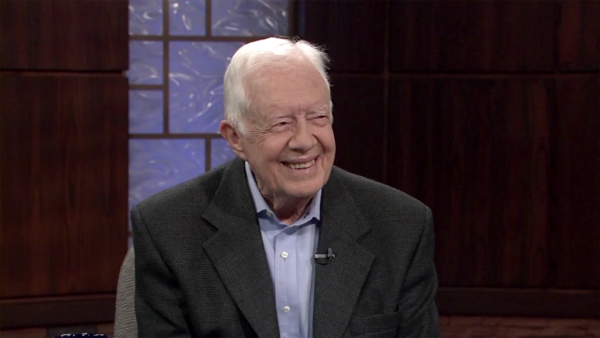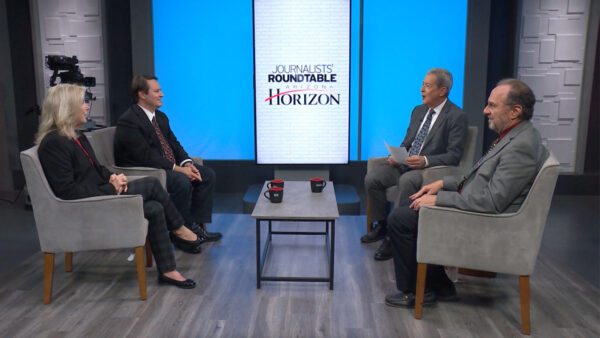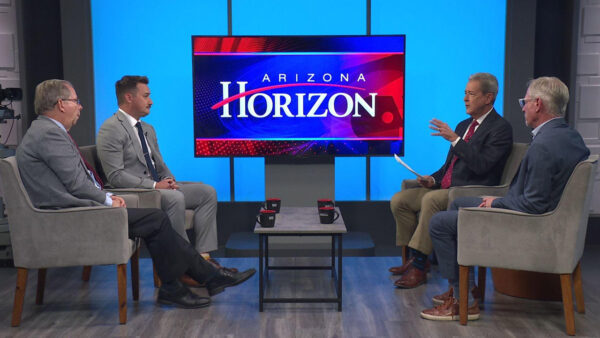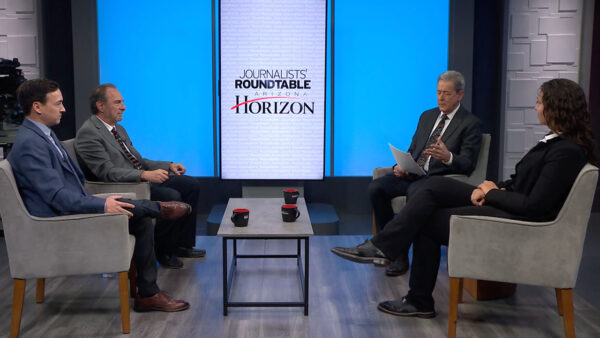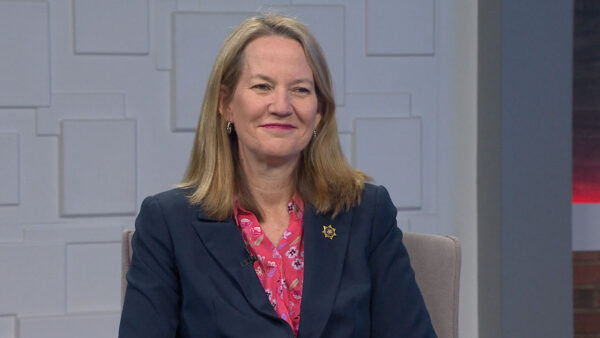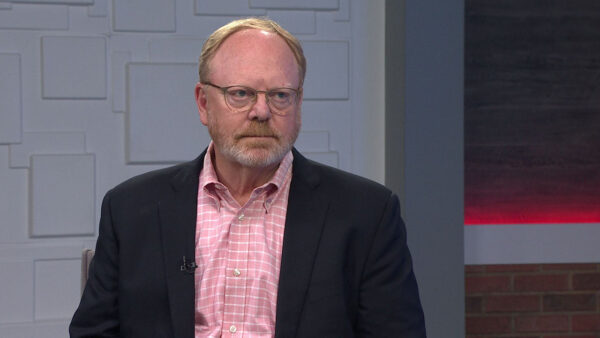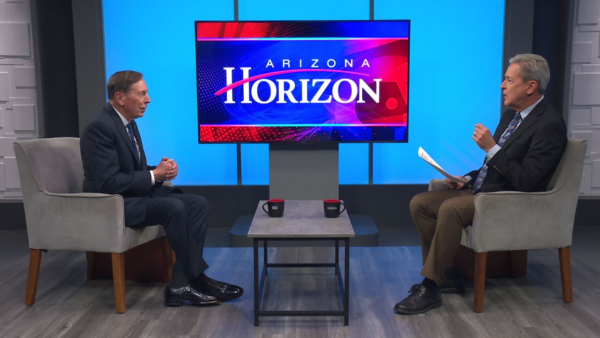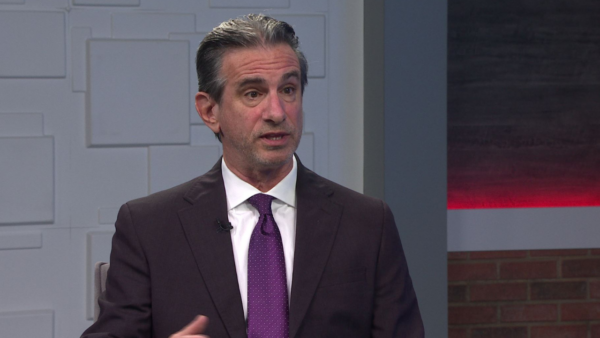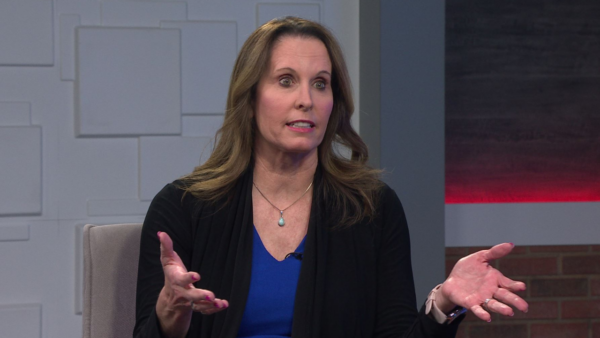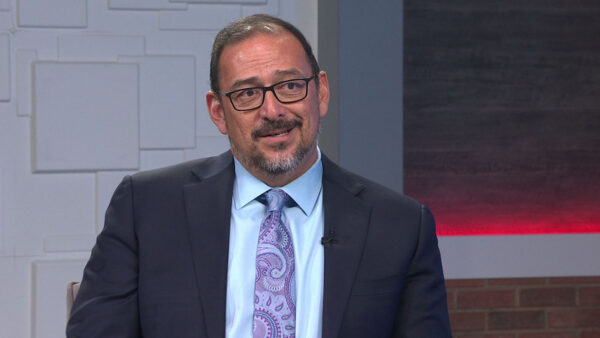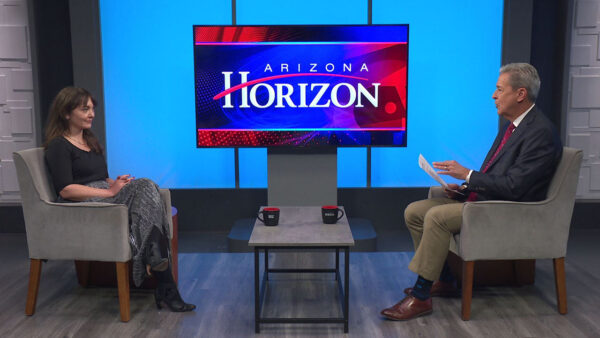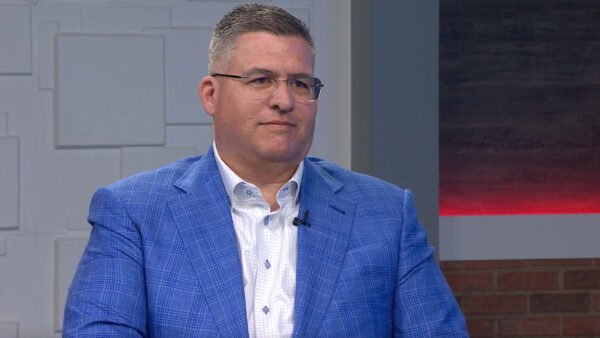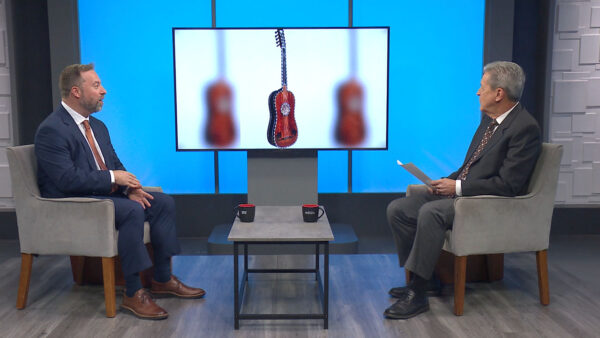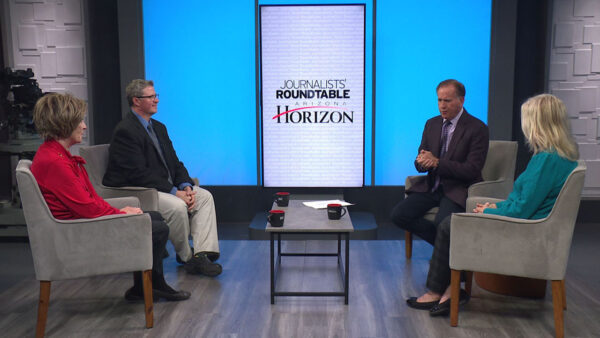As demonstrated by the crisis in Flint, Michigan recently, maintaining a water infrastructure to get
water to your tap is vital. Joe Gysel, president of the National Association of Water Companies and CEO of water provider EPCOR Water USA, will talk about Arizona’s water infrastructure and the need to keep it maintained.
Ted Simons: They said Rubio has the ideals and the toughness necessary to bring change to Washington. We talk with Jon Kyl and Matt salmon, in backing Rubio.
Ted Simons: It happened in flint, Michigan, could it happen here? Could Arizona be at risk of a water crisis, due to aging pipes and other infrastructure? Joining us now to talk about the State of Arizona's water works is the President of the national association of water companies and CEO of epcor water, usa, Joe gysel.
Ted Simons: What is the state of arizona's water infrastructure?
Joe Gysel: Thing this is a degree of nations. The nation's infrastructure was built over the last 300 years, various states are younger or older, as the case may be, and you know, the national, the national infrastructure condition is of great concern. They recently published over the next two years, 271 billion, must be spent on refurbishing and rehabbing and improving the nation's water and wastewater infrastructure. Arizona alone, is approaching $10 billion over that time period, just for a place for their infrastructure, so we're in various stages, and Arizona is a younger state, and it is probably in a better condition over all, and with the materials that they have been using, and not as much lead, which has been in the, has been in the news lately, but we're in this cycle, which really needs to be looked at.
Ted Simons: As far as the refurbishment, what needs to be done?
Joe Gysel: Well, I think that there is a number of different areas that have to be looked at. The first is the infrastructure in the ground, that delivers the water, and in Arizona, in our company, in Arizona, we average 10% of water loss, just through the age of the infrastructure and pipes. So when you think 10% loss, that's quite a bit, and nationally the average is north of 20%. So, when you think of the amount of water that's lost through pipes and infrastructure in the ground, before it gets to a customer, that's a huge amount of water.
Ted Simons: How is that water lost? Just leaking? Is it evaporating or what's going on?
Joe Gysel: Leaking, pipe breaks, there was a huge main break, and it was flooded, so those are the things that aging infrastructure, really starts to look at, and that's for a lot of the water, where the water is lost.
Ted Simons: As far as the refurbishment, replacing pipes, these things, you mentioned Arizona, 10 billion over the next decade, does that translate to increased water rates?
Joe Gysel: It certainly will, and you need to reinvest in your infrastructure to make that safe. For example, our company here in Arizona, will spend between 200 and 500 million over the next five to ten years, and refurbishing our districts on what has to be done. A lot of this stuff, has been built a number of years ago, and it will impact rates, unfortunately, when you deal with private water company, such as ourselves, a lot of the infrastructure has been contributed, so customers haven't paid for that along the way, and some of our rates in our jurisdictions are very low, given that. As we look to rebuild that infrastructure, that has to be paid forward, and that will have an impact on the rates.
Ted Simons: I would imagine, as capital projects, have not really been the first funding priority, have they?
Joe Gysel: They have certainly not. And you get into, you know, looking at new technologies for treatment, and people take what they cannot see for granted. It's underground and there, delivered. And so, people look for other types of resources, treatment types, new technologies in that regard, and to really try to improve your performance, but the capital in the ground is --
Ted Simons: That's the greatest risk, and treatment and distribution, those, really are the rate that revenues have focused on, those heretofore, and you are going that's going to have to change?
Joe Gysel: That's correct, and another part that we have not really started to address, too, I talked about pipes in the ground, and groundwater in Arizona is a very big source of supply, almost 50% of our resources for this state, comes from groundwater. When you have built wells back in the 1940s and the 1950s, they are well beyond their extended life, and in our jurisdictions where we service, we have a number of them that have to be rebuilt. Each well rebuild is anywhere from 4 to 5 million for a construction approach, and that is a lot of money on a resource, that's been taken for granted, in terms of the pumping in the wells, and the treatment thereof so a lot of infrastructure.
Ted Simons: Are there some areas of Arizona that might be more at risk than others?
Joe Gysel: In terms of the --
Ted Simons: Aging pipes, infrastructure, the whole nine yards?
Joe Gysel: I think that some of the newer areas that we see, speaks for our company, we have an agri-fear district in the west valley, new infrastructure, very good shape, and then we have other older jurisdictions like the Sun City, Sun City west, which were built a number of years ago, and we have a major capital program going on right there to rebuild their infrastructure.
Ted Simons: So, I started by mentioning flint, and I am sure that flint is, you know, a topic de jour. Could something like that happen here?
Joe Gysel: Well, I think some of the things that you have to look at, what really happened in flint, and flint changed their water source, they went from a treated water source from the city of Detroit, to taking it into a river that had a very corrosive composition, and you put that together with aging infrastructure, and the quality of the infrastructure, and a lot of lead pipe was still in flint, Michigan, and what happened with the corrosive nature of the new source water, that ate away the buildup that was protecting the people from the lead pipe. So, could it happen here in Arizona? First off, I don't think that you can see a wholesale change of resources for our systems here, and certainly not our own. Secondly, the quality of that resource would be a lot better, our major surface water sources, you know, cap from the Colorado, and we have the salt and the verde river, so good quality surface resources, and then the groundwater, is quite good, and we do have issues of arsenic, and some of the munitions of the old motorola, which are governed by epa regulation to take out those contaminants are there, but I think that for the most, most of our, an issue around flint, here in Arizona, is pretty remote. For example, our service territories, we have no lead pipe, so there is nothing for it to bring forward, if you want to call that, through more corrosive -- I think it's very remote.
Ted Simons: And quickly, something you said, being a younger community, quickly, water management technology, is that world changing?
Joe Gysel: There is a lot of new technologies for treatment. Some of our facilities here are membrane types of facilities, so we do have some very high end treatment types, but the tried and true methods of our plants are still very much in service around the country, and internationally, as well. So, I don't think that there is a lot to be said. The lift on the new technologies in the plant process and the treatment, that is not the greatest thing.
Ted Simons: So basically, the work needs to get done and don't be surprised if you are going to have to pay for it?
Joe Gysel: That's true. But, you have to remember, there is ways to mitigate that permanent time lines, how we invest it, if we can consolidate into larger jurisdictions, and districts, that mitigates the rate payers, as well.
Ted Simons: Thanks for joining us.
Joe Gysel: Thank you very much, I appreciate it.
Joe Gysel :President of the National Association of Water Companies and CEO of water provider EPCOR Water USA








